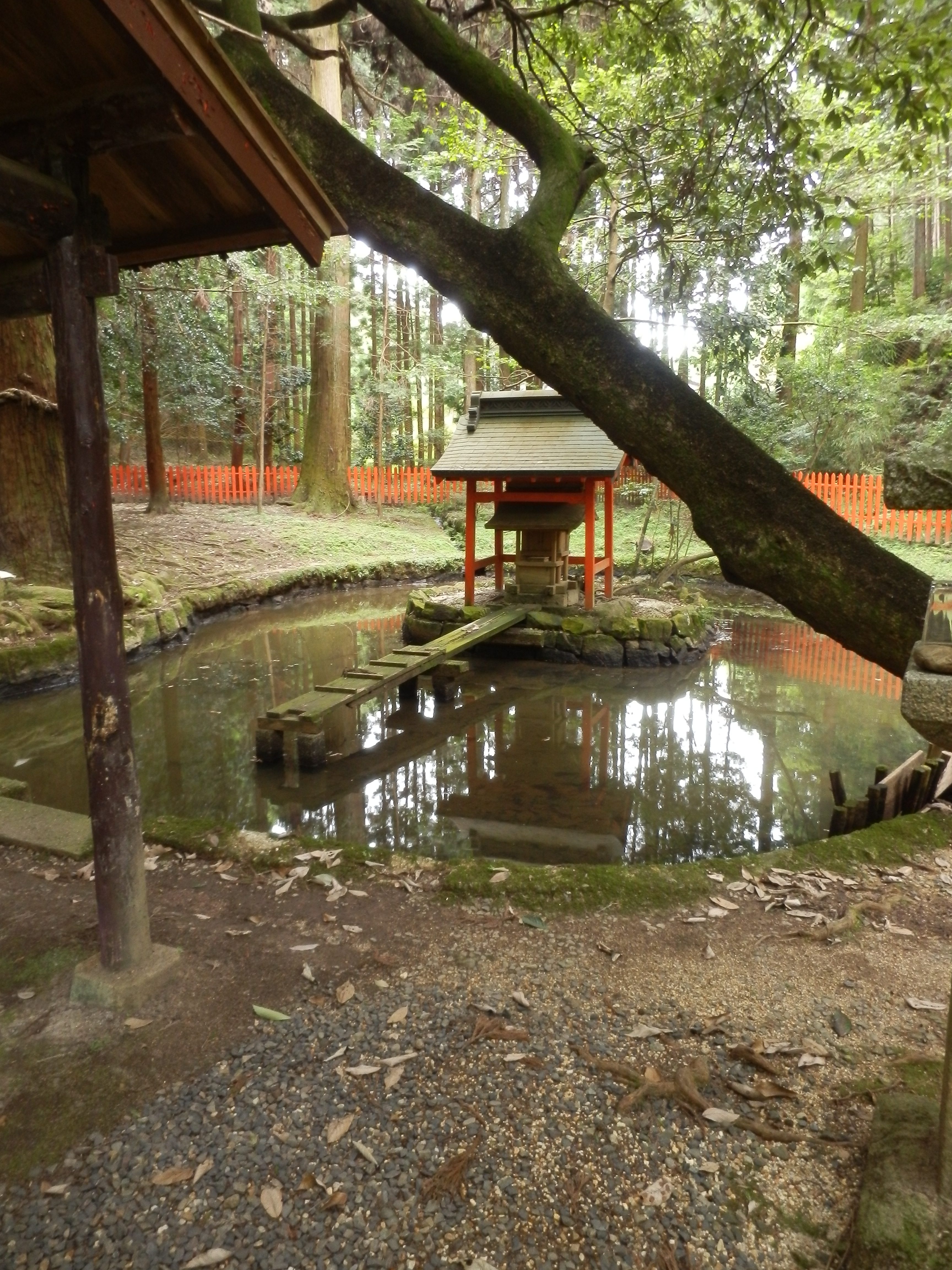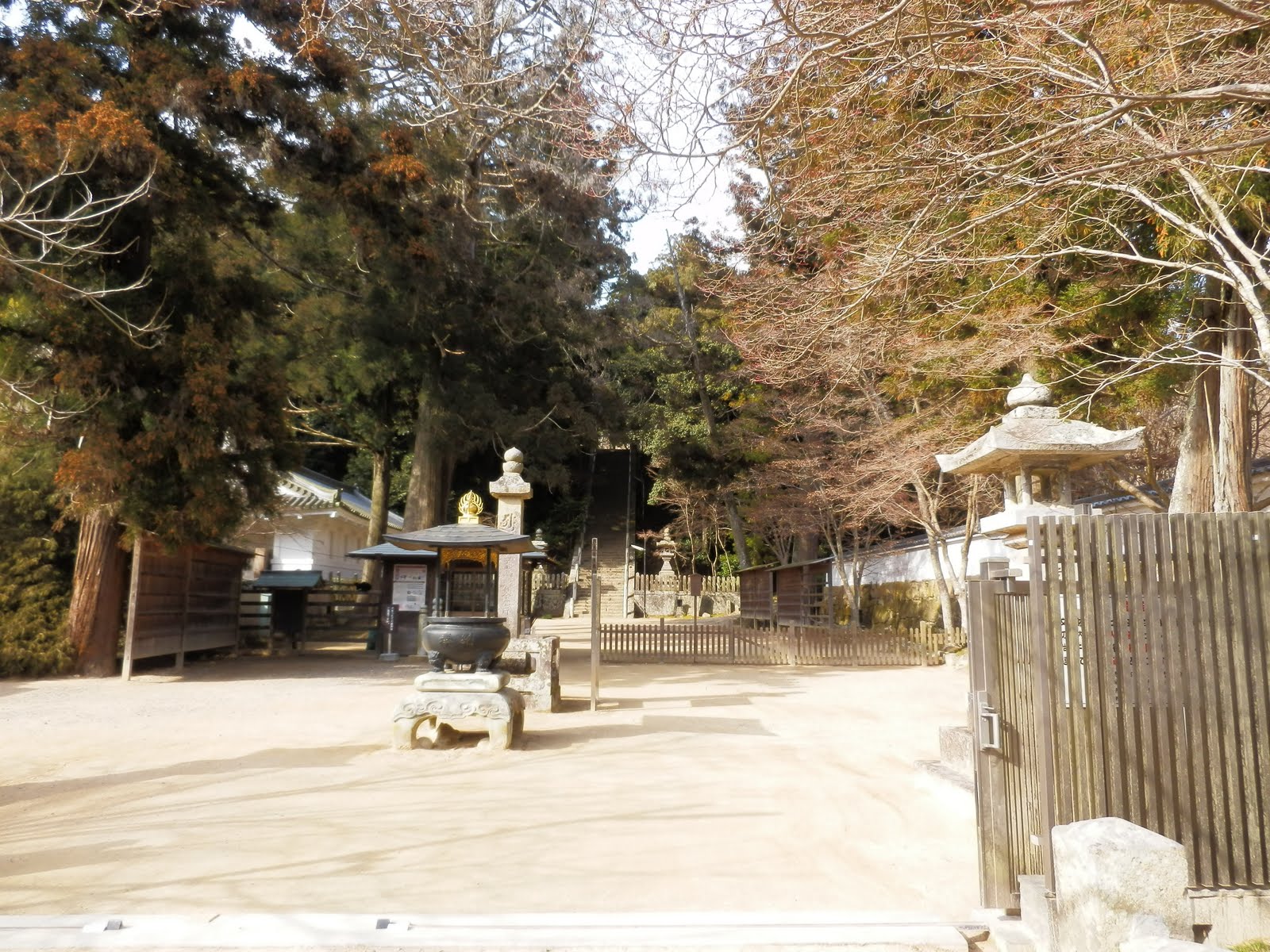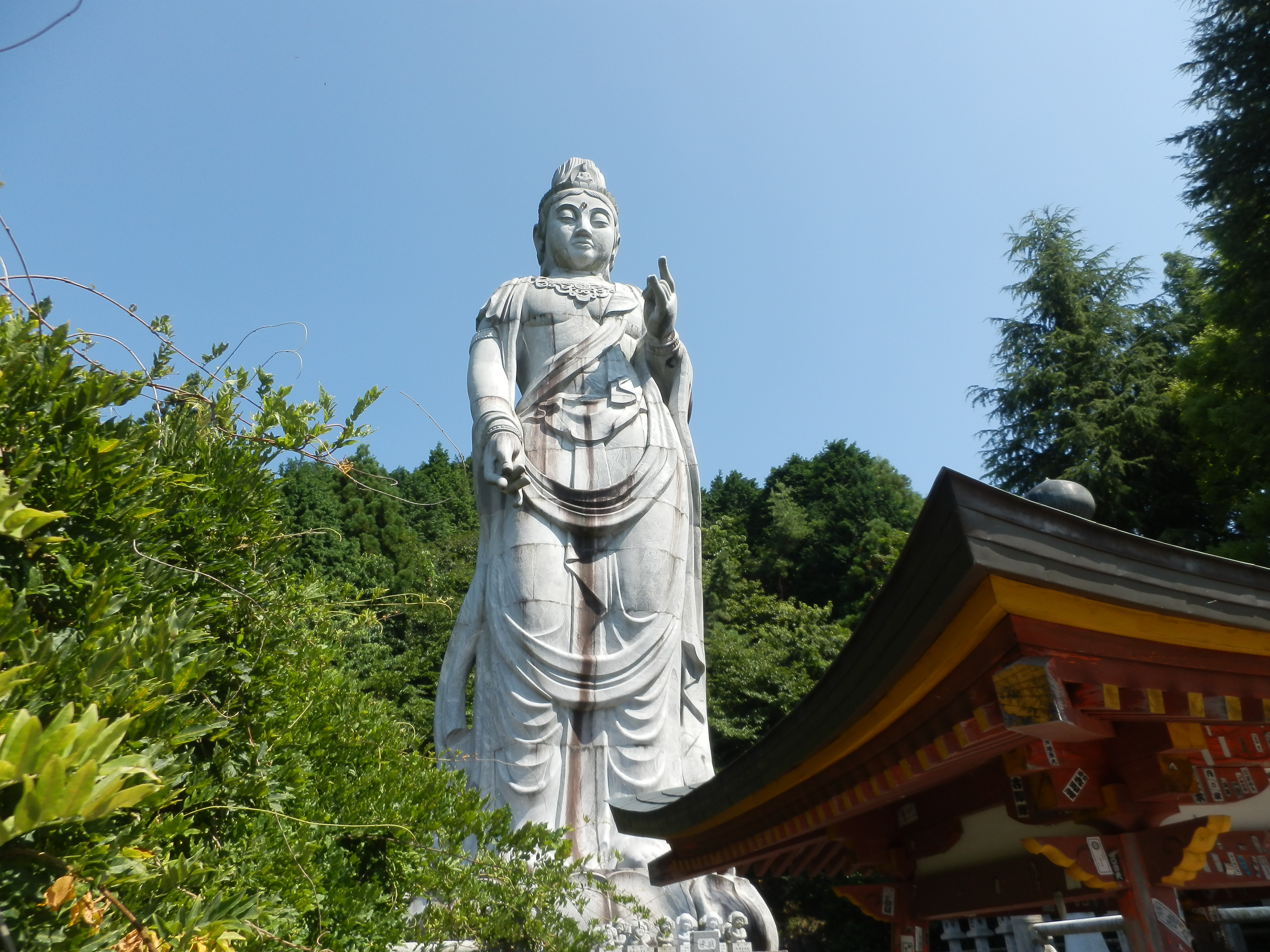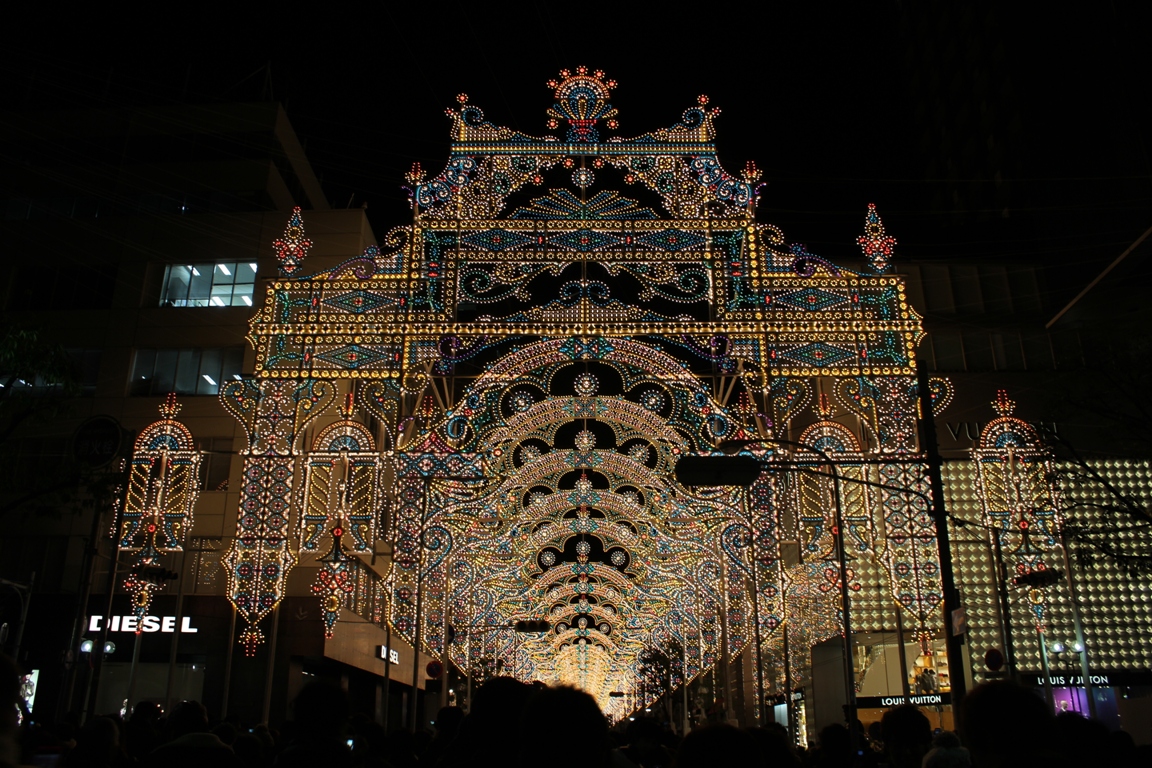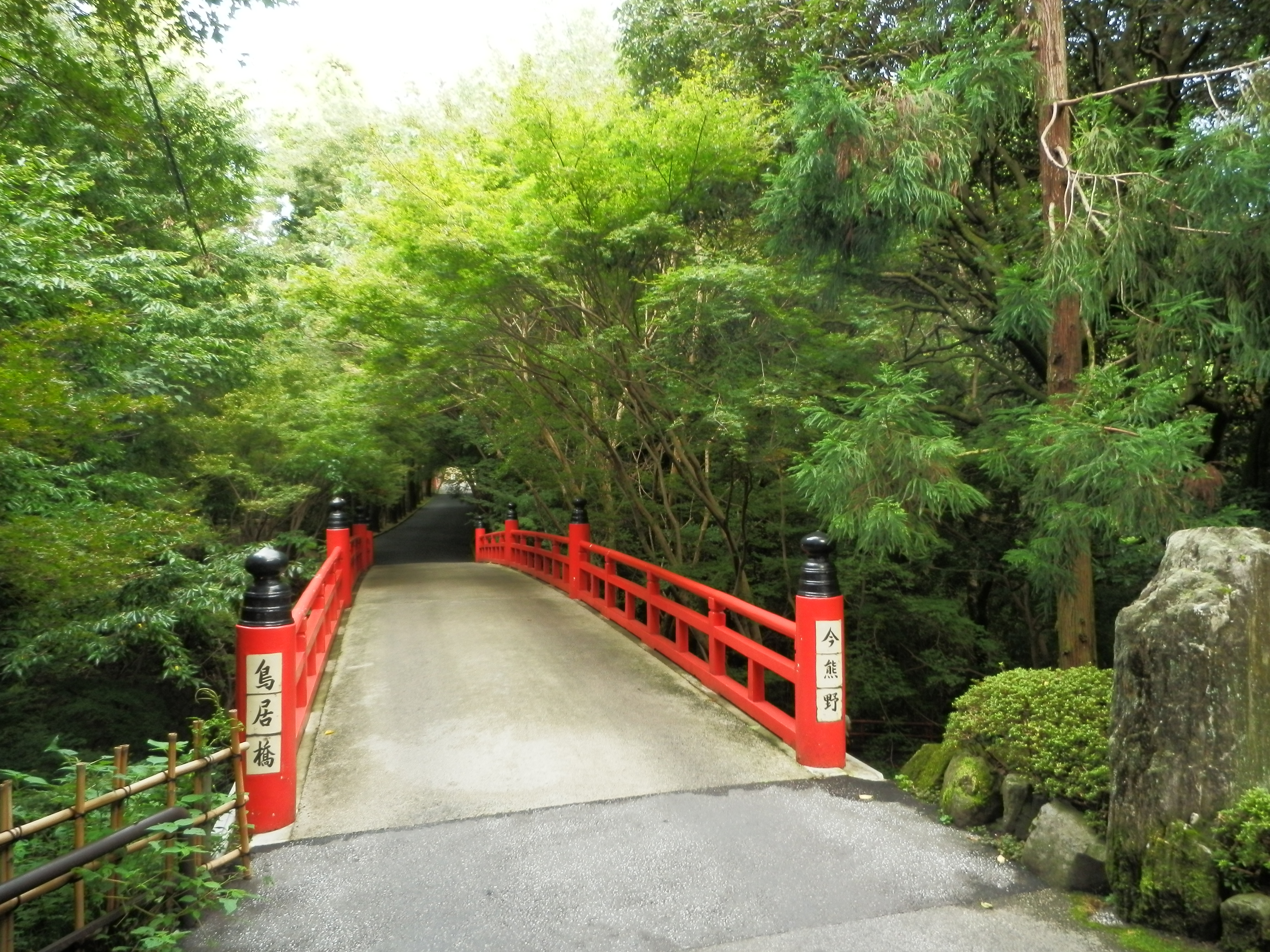Saigoku Kannon Pilgrimage: Ishiyama-dera 石山寺 and Mii-dera 三井寺
Ishiyama-dera, temple number 13 on the route, and Mii-dera, number 14, are both located along the southern edges of Lake Biwa. We’ll take them on in numerical order.
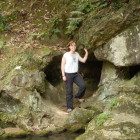 Ishiyama-dera is a beautiful temple upon a mountainside overlooking the lake; it is built on and amongst wollastonite rock formations that give it a different look from other temples I had seen along the pilgrim trail. It is also famously the place where Murasaki Shikibu began to write the classic Tale of Genji. (Author’s confession: I have never read the Tale of Genji, and so while I should have been more awed to be in the very place she began that work, I was actually more into the rocks, the water, and the trees)
Ishiyama-dera is a beautiful temple upon a mountainside overlooking the lake; it is built on and amongst wollastonite rock formations that give it a different look from other temples I had seen along the pilgrim trail. It is also famously the place where Murasaki Shikibu began to write the classic Tale of Genji. (Author’s confession: I have never read the Tale of Genji, and so while I should have been more awed to be in the very place she began that work, I was actually more into the rocks, the water, and the trees)
The principal image at Ishiyama-dera is of Nyoirin Kannon, the wish-fulfilling Kannon, and this one is specifically linked to marriage and finding a partner, as well as being released from addictions. The image is only put on display once every 33 years and upon the enthroning of a new emperor. The zushi, which contains and protects the image, bears the imperial crest, and the key to it belongs with the Imperial Household Agency in Tokyo. When Imperial order allows the Kannon image to be shown, a representative of the Emperor comes to the temple and opens the zushi himself.
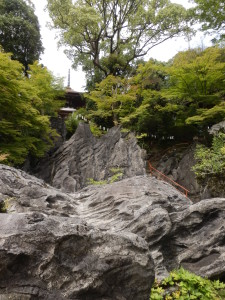 The grounds are full of interesting sights; the first few of which you will encounter are the gate, impressive as always, and then a small cave near the temizuya (hand washing station). Passing through the narrow cave is said to bring good luck. Further rock formations include the Kekai-ishi, the unique rock grove formed of wollastonite: this striking feature was formed when a mass of limestone was heated by granite magma around 200 million years ago. The main Kannon image of this temple was placed on an outcrop of this rock formation, and then the temple was built around it. You will see coins on the rocks as offerings to the energy of the place. The effect is that the rocks look like they were caught in time while flowing.
The grounds are full of interesting sights; the first few of which you will encounter are the gate, impressive as always, and then a small cave near the temizuya (hand washing station). Passing through the narrow cave is said to bring good luck. Further rock formations include the Kekai-ishi, the unique rock grove formed of wollastonite: this striking feature was formed when a mass of limestone was heated by granite magma around 200 million years ago. The main Kannon image of this temple was placed on an outcrop of this rock formation, and then the temple was built around it. You will see coins on the rocks as offerings to the energy of the place. The effect is that the rocks look like they were caught in time while flowing.
Below the Hondo (main hall of worship), you’ll see the red well, a sacred spring that is the source of water for all the temple rituals. The water runs through a series of caves all throughout the temple area. There’s a Benzaiten, shrine to the patron of everything that flows (from water to artistic inspiration). Look for the mini-pilgrimage, containing a small shrine for each of the 33 stops. There is a pagoda, 2-storied, called a tahÅtÅ; it is the oldest surviving example of a tahÅtÅ in Japan. Found only in Shingon temples, this form of pagoda incorporates the original Indian architecture of the stupa more visibly than other forms of pagoda.
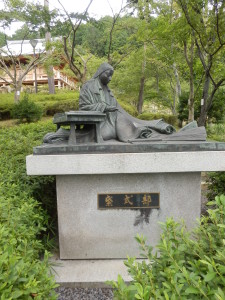 Ishiyama-dera also has a monument to Lady Murasaki Shikibu, and you can also visit the moon-viewing platform (location the same, but the platform itself has been renovated many times) which is said to have inspired her great work of literature. It is tradition to write poetry as you watch the harvest moon rise; from this spot the moon is reflected in Lake Biwa as it ascends.
Ishiyama-dera also has a monument to Lady Murasaki Shikibu, and you can also visit the moon-viewing platform (location the same, but the platform itself has been renovated many times) which is said to have inspired her great work of literature. It is tradition to write poetry as you watch the harvest moon rise; from this spot the moon is reflected in Lake Biwa as it ascends.
Temple 14, Mii-dera also has a lovely moon-viewing pavilion, but its claim to fame is the temple bell. Miidera’s mark on the map is a large bell, and the temple is famous for more than one of the deep bells that often characterize Japanese Buddhist temples. One of my favorite aspects of Mii-dera was its temple legend.
Not the one about the stolen bell (in which Benkei stole the Miidera bell during a raid [warrior monks back then, go figure], and as he carried it away toward Mt. Hiei it began to toll mournfully as if it wished to go home. It wouldn’t stop, so Benkei brought it back to Miidera where it belonged), but one about the great serpent of Lake Biwa.
In that story, a man stops some kids from tormenting a snake, and then stops at an inn where he sees a beautiful attendant, hangs around for a few weeks and falls in love with her, they get married, etc. When they get ready to have a kid, she is like “don’t go into this room until I come out, or say it’s okay,†so he agrees, but after a while the silence is really scaring him, so he peeks in and sees the newborn baby being cuddled by a big snake. She of course is his wife/the great serpent spirit, and since he broke contract, she now has to go back in the lake. However, she leaves a note saying the baby is holding a jewel that keeps it from being unhappy, so the baby doesn’t ever really cry. Then the local overlord hears about this jewel, demands it, has it seized, and the baby starts crying. The serpent had said if the baby were to ever get cranky, to bring it to this spot near the lake and it’ll be okay. When the father does this, the serpent reappears and explains that the jewel was actually one of her eyes, and while she’s at it, she doesn’t really mind giving up the other one if it will make the kid happy. So she produces a second jewel and is therefore blind, but she says, in the evening go to Mii-dera and ring the bell so she’ll hear it and know everything is okay.
So I really liked the idea of the Great Serpent of Lake Biwa swimming around down there, blind, but whenever pilgrims ring the bell (said to be the best-sounding bell in Japan), she is reassured that everything is a-OK.
The principal Nyoirin Kannon image at Mii-dera is not the principal image of the entire temple, but rather of the Kannon-do, or Kannon temple, there. The Kannon-do was relocated to a position lower down the mountain in 1481 so that female pilgrims, who were not allowed past the main gates of the male-only temple complex, could worship the Kannon.
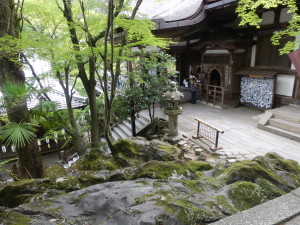 Next to the Kannon-do you will find a pilgrimage temple, with images from 100 sacred places (33 from the Saigoku, that’s the one we’re on, 33 from the Bando pilgrimage (around Tokyo), and 34 from the pilgrimage in Chichibu (in the Chichibu mountains in Saitama). As you explore Mii-dera, take note of the beautiful structure of the main hall. Nearby, you will find the spring that gives the meaning of the temple name (三井寺means three-wells-temple, apparently three different royal folks bathed in the sacred spring!), which still makes gurgling noises as the water bubbles up around the rocks. Above the viewing window, you’ll see a beautiful carving of a dragon. Close to all this is Benkei’s bell. You should also take a walk through the treasure hall/museum in the main area. On your way up to, or away from, the temple, take note of the Biwa Canal, constructed in 1885 and one of the first uses of dynamite in Japan.
Next to the Kannon-do you will find a pilgrimage temple, with images from 100 sacred places (33 from the Saigoku, that’s the one we’re on, 33 from the Bando pilgrimage (around Tokyo), and 34 from the pilgrimage in Chichibu (in the Chichibu mountains in Saitama). As you explore Mii-dera, take note of the beautiful structure of the main hall. Nearby, you will find the spring that gives the meaning of the temple name (三井寺means three-wells-temple, apparently three different royal folks bathed in the sacred spring!), which still makes gurgling noises as the water bubbles up around the rocks. Above the viewing window, you’ll see a beautiful carving of a dragon. Close to all this is Benkei’s bell. You should also take a walk through the treasure hall/museum in the main area. On your way up to, or away from, the temple, take note of the Biwa Canal, constructed in 1885 and one of the first uses of dynamite in Japan.
To get to Mii-dera, take the Keihan Ishiyama-Sakamoto line and alight at the Miidera station, from which it’s a ten minute walk.
For Ishiyama-dera, from Kyoto Station it’s a 13 minute train ride to the JR Ishiyama Station. Take the Tokaido line to Ishiyama Station and follow posted maps and signs. If you take Keihan, change to the Ishiyamasakamoto line (石山å‚本線) and then get off at the Ishiyamadera station, from which it’s a ten minute walk.
Happy trails!
-Lemmon
Ishiyama-dera main page: http://www.ishiyamadera.or.jp/
Mii-dera main page: http://www.shiga-miidera.or.jp/index.htm
